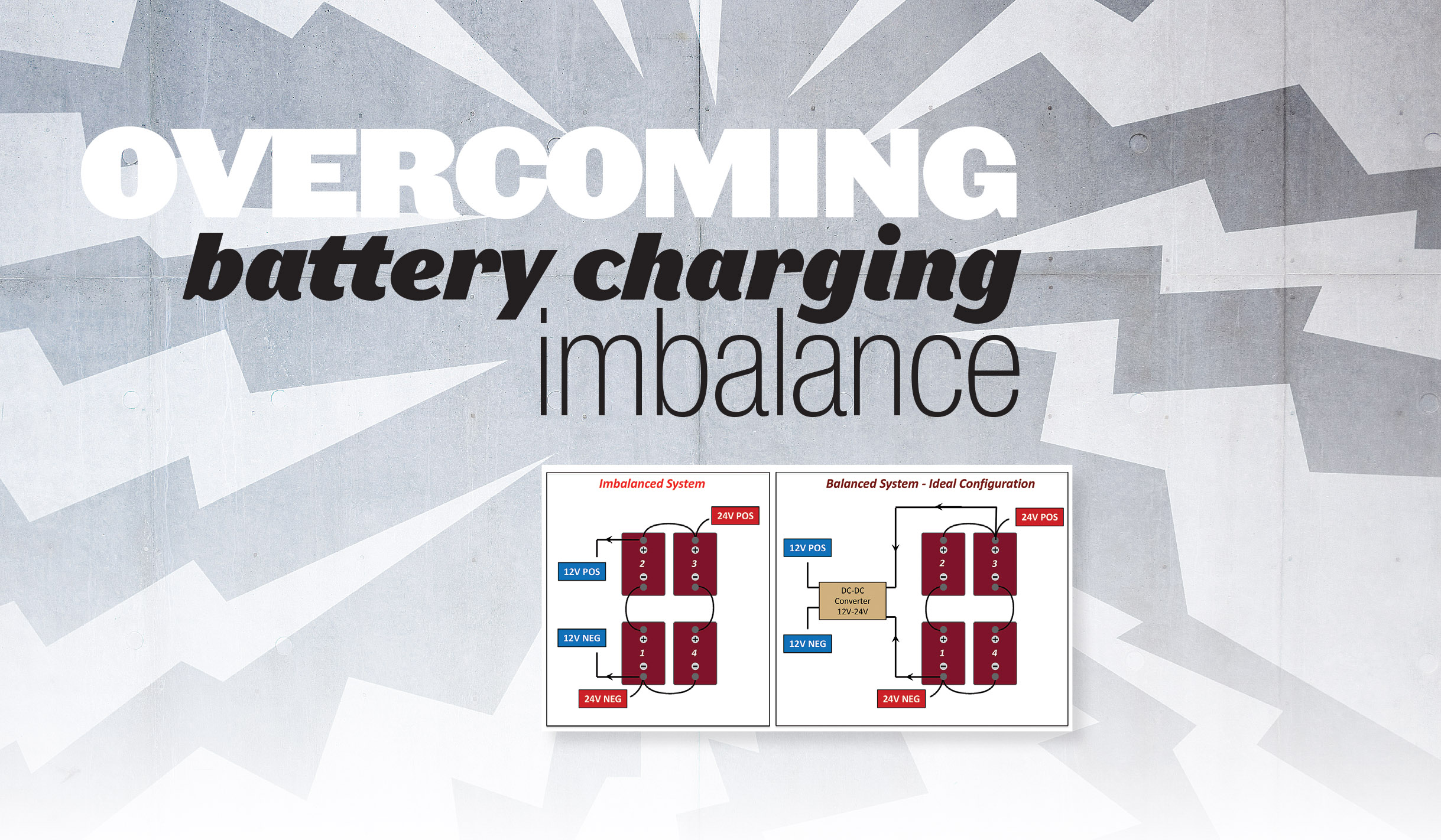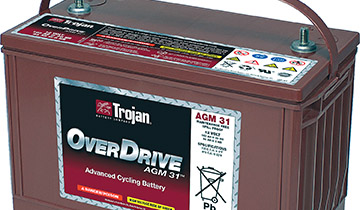
By Brad Bisaillon

With the emergence of advanced electrical systems in today’s bus designs, reliance on batteries to power them has become increasingly important. These continually evolving electrical subsystems are putting a tremendous strain on the batteries that power them, so effective management of the battery bank’s charge and discharge characteristics are imperative to extending the overall life of deep-cycle AGM batteries.
Proper balancing of a bus’ electrical load can mean the difference between achieving a battery’s rated lifecycle or its premature failure. While bus original equipment manufacturers (OEM) in both North America and Europe build 24-volt platforms (2 X 8D batteries or 4 X Group 31 AGM batteries), those in North America follow a commonly accepted practice of installing accessory devices that are only 12-volt. These 12-volt devices include fare boxes, fire suppression systems, and security and surveillance equipment. They must be connected through an equalizer (or more favorably via a DC-to-DC converter) in order to equally discharge the battery pack.
Unfortunately, it is also a common practice to directly connect some of these accessory devices to only the 12-volt power supply, or half of the battery bank, because some of these devices are required to remain powered even when the master disconnect is off. This causes a discharge imbalance whereby one half of the battery bank is being discharged to a greater depth of discharge than the other half. This results in an equally harmful recharge imbalance with the other half of the battery bank being overcharged.
This charge imbalance causes a recharge challenge. As the recharge current flows to the batteries, the current will work to charge all of the batteries in the 24-volt system, instead of just those which require charging. The challenge is that while greater current is needed to charge the 12-volt side of the battery system, the batteries that have only been partially discharged will become overcharged causing them to swell and gas. This will eventually reduce the life of these batteries and require more frequent, costly battery replacements. The use of an equalizer assists in a more balanced recharge. As these devices are generally connected behind the master disconnect, however, the system is being defeated.
In Europe, the same 2 X 8D and 4 X Group 31 AGM battery systems are used by bus OEMs. The big differentiator is that the added technology devices are 24-volt, which matches the platform’s total voltage. Because the voltages are the same, no imbalance in discharging exists so no overcharging occurs. As a result, battery life in European buses is far greater than that in North America.
While 24-volt devices are preferred, there are ways to add 12-volt devices to current bus designs here in North America. Equalizers are one option, but these devices need a power source bypassing the equalizer if loads need to be powered when the master disconnect is off. The ideal method of achieving this is to use of a DC-DC converter. These converters have a 24-volt input, connected across the entire battery bank, and a 12-volt output for 12-volt devices. The use of a DC-DC converter reduces the need of the equalizer, which are not commonly used in Europe. A major North American bus OEM uses a DC-DC converter instead of an equalizer, a design from its parent company based in Europe. By using this DC-DC converter charging system, the batteries used in their buses do not suffer the problem of system imbalance as in North America.
As bus designs become more advanced along with the electrical systems that power them, the need for more effective charging methods of the battery system will continue to be extremely important. Not only will these strategies impact the operation of the bus, they will extend battery life and enhance a bus OEM’s overall battery investment.
